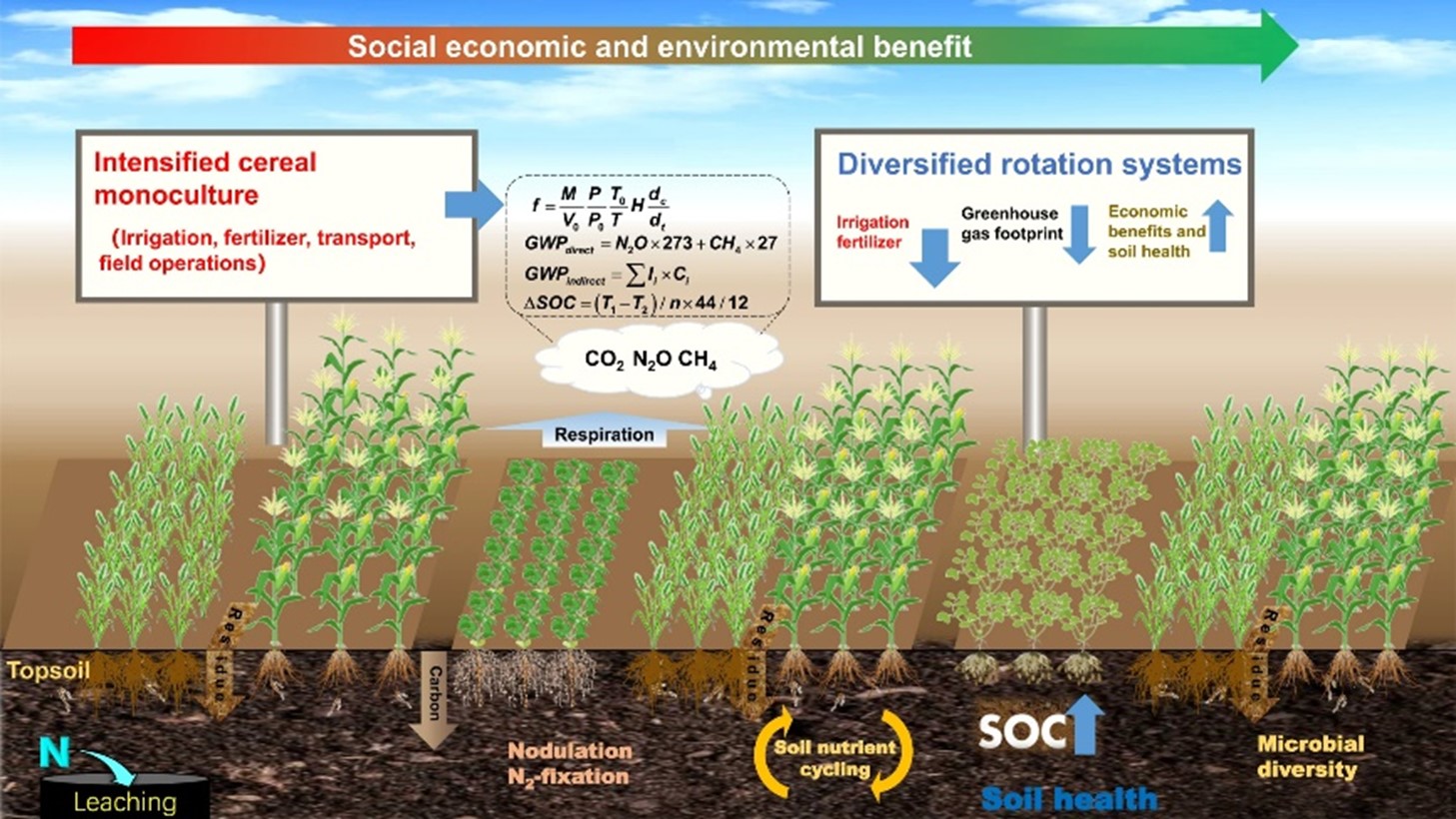January 3, 2024 | Nature Communications | Source |
Introduction: Conventional intensive farming boosts yields but also drives GHG emissions, soil degradation, and climate vulnerability, especially in densely populated regions with limited resources. Collaboration among institutions across East Asia, Europe and North America, conducted a six-year (2016–2022) field experiment in the North China Plain to assess how diversifying wheat–maize monoculture with sweet potato and legumes (peanut and soybean) impacts food production, GHG emissions, soil health, and farmer income.
Key findings:
- Increased Ecosystem Productivity: The sweet potato→wheat–maize (SpWM) rotation increased yield by 38% and farmer income by 60%, while peanut (PWM) and soybean (SWM) raised income by 13–22%. SWM yielded 8–31% more protein than wheat–maize (WM), and ryegrass–sorghum (RSWM) produced the most biomass. These rotations also enhanced subsequent WM productivity, increasing grain yield (26–32%), economic benefits (39–46%), and protein yield (25–29%).
- Reduced Net GHG Emissions: Diversified rotations lowered Nâ‚‚O emissions by up to 49% and increased carbon sequestration by 33–76%. GWP dropped 32–51%, and indirect emissions from agrochemicals and irrigation fell 34–41%. Soil carbon sequestration offset 75–89% of emissions, reducing net GHG emissions by 83% (SpWM), 90% (SWM), and 92% (PWM).
- Improved Soil Health: PWM had the highest soil health score, followed by SWM and SpWM, scoring 41–59% higher than WM. Sweet potato, peanut, and soybean rotations enhanced microorganism diversity by 7–10%, with legumes enriching bacterial and fungal communities.
- Economic and Environmental Benefits: Diversified rotations outperformed WM in productivity, income, and sustainability. Soil health correlated positively with yield, income, and carbon sequestration but negatively with GHG emissions. Large-scale adoption in the North China Plain could increase cereal production by 32%, income by 20%, and cut COâ‚‚-eq emissions by 106.8 million tons annually.
This study confirmed the long-term benefits of diversified crop rotations, supporting higher yields, system resilience, and soil health while improving food nutrition. Findings align with global studies demonstrating increased productivity, reduced fertilizer reliance, and enhanced economic gains. Integrating diversified systems into policy can support China’s sustainability goals. However, long-term, multi-location research is needed to address climate variability and regional differences.

Figure | Schematic illustration of system integration from issues to outcomes.
In the North China Plain—the case study area, traditional cereal monoculture (such as wheat–maize double-cropping, i.e., two cereal crops per year) requires inputs of synthetic agrichemicals and irrigation in food production, causing large greenhouse gas (GHG) emissions; in contrast, rotation systems diversified with cash and legume crops can maintain crop yields, increase farmers’ income, and reduce GHG emissions due to the biological N2 fixation by legumes partly substituting for synthetic N inputs. Legume-included rotations can also enhance soil health by stimulating soil microbial activities, increasing carbon sequestration, and enhancing nutrient cycles.





